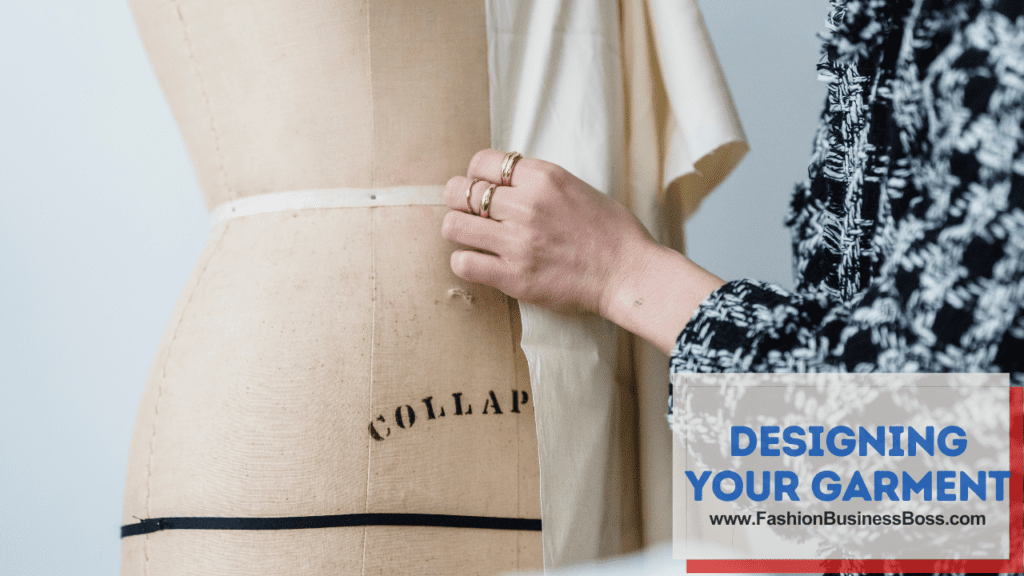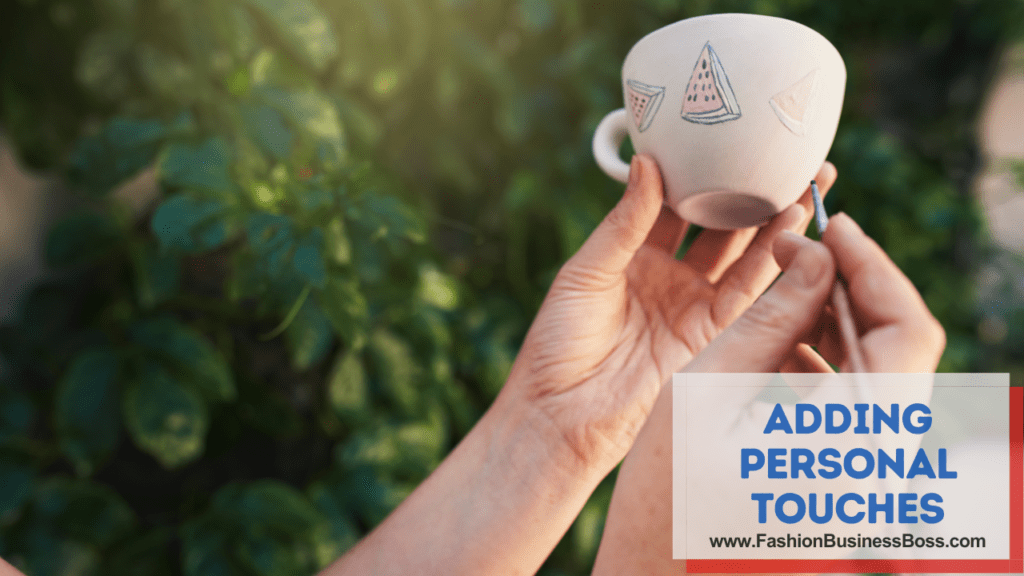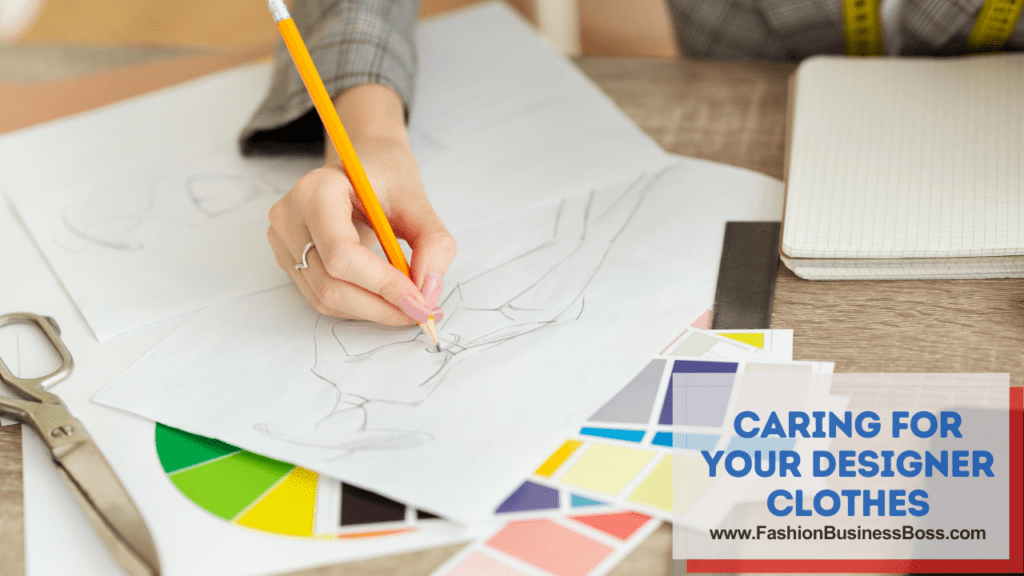Fashion is an expressive art form, and there’s no better way to make a personal statement than by designing your own clothes. With a little creativity, some basic sewing skills, and a lot of inspiration, you can craft unique, designer-quality garments that reflect your style and personality.
To create your own designer clothes, start with designing your garment, gather quality materials, take precise measurements, and use sewing skills to bring your unique vision to life.
In this article, we will walk you through the process of making your own designer clothes, from conception to completion.
Designing Your Garment

When venturing into the world of designing your own clothes, the first essential step is to have a crystal-clear vision of what you want to create. This involves picturing the final garment in your mind, thinking about its shape or silhouette, envisioning the type of neckline it will have, deciding on the style of sleeves, and considering any unique features or embellishments.
With this mental blueprint in place, the next step is to translate your vision onto paper. Create a rough draft or sketch of your garment. In your sketch, make sure to capture all the critical design details you’ve visualized.
It’s also vital to be aware of your sewing skills, especially if you’re a beginner. Opt for a design that matches your current skill level. Starting with a simple design can prevent frustration and increase the likelihood of a satisfying outcome. As you become more experienced and confident, you can progressively tackle more intricate projects and bring your sophisticated design ideas to life.
Read more about: Building a Legacy: Strategies for Clothing Brand Achievement
Gathering Materials
When embarking on your clothing design project, the initial step is to gather the necessary materials. These materials are essential to bring your creation to life. You’ll require items such as fabric, thread, zippers, buttons, and any other notions specific to your garment. It’s crucial to choose high-quality materials that align with your design concept and are suitable for the current season or the intended use of the clothing.
The fabric is the core element of your garment. Consider its color, texture, and weight to ensure it complements your design. Thread is essential for sewing, so make sure it matches the fabric and is of good quality to prevent issues during the sewing process. Zippers and buttons are functional components that should also harmonize with your design and add practicality to the garment.
In selecting materials, it’s wise to think about the durability and care requirements of the fabric, as they influence the longevity and maintenance of the finished piece. Careful consideration and selection of the right materials are crucial for bringing your design to fruition.
Taking Accurate Measurements
Accurate measurements are the cornerstone of creating a well-fitting garment. They are the foundation upon which your design rests. To obtain these measurements accurately, you will need a soft tape measure. Start by measuring key areas of your body, which typically include your bust, waist, hips, and inseam.
It’s crucial to adhere to a few essential guidelines. Firstly, stand naturally and avoid holding your breath or tensing your muscles; your measurements should reflect your body’s true dimensions. Keep the tape measure snug against your body, ensuring accuracy without pulling it too tight, and remember that you want a precise yet comfortable fit. Measure around the fullest part of your bust, the narrowest part of your waist, and the widest part of your hips. The inseam measurement should run from the crotch to the desired length of your pants.
Furthermore, consider factors like ease and seam allowance. Garments require extra space for comfort, known as ease, and patterns typically include a seam allowance for sewing fabric pieces together. Understanding and factoring in these considerations is vital when working with patterns. Accurate measurements not only guarantee a well-fitting garment but also save time and materials by reducing the need for adjustments during the sewing process. Taking your measurements meticulously is a fundamental step towards bringing your clothing design to life.
Pattern Selection and Alteration

Selecting and modifying patterns is a critical step in bringing your clothing design to life. To begin, you have two main options: choosing a pre-made sewing pattern that closely aligns with your design or crafting a custom pattern from scratch if you possess the necessary skills.
Many beginners and even experienced sewers often start with a commercial sewing pattern as it can save time and effort. These patterns come with various designs and size options. You can select one that closely resembles your vision, and it will include detailed instructions on how to construct the garment. However, it’s important to keep in mind that even with a commercial pattern, alterations are frequently required to achieve the precise fit and style you desire.
For those with pattern-making skills, you have the flexibility to create a pattern tailored to your specific design, ensuring a perfect match. Whether working with a commercial pattern or crafting your own, the key is to pay close attention to your previously taken measurements. These measurements serve as your guide to adjust the pattern accurately. Make alterations as needed to ensure that the final garment not only matches your vision but also fits you perfectly. This attention to detail is essential to create a personalized and well-fitted piece of clothing.
Read more about: Breaking into the Fashion Industry: How to Open a Clothing Brand?
Cutting Your Fabric
Preparing your fabric is a crucial step in the process of creating your own clothing. To begin, lay your chosen fabric flat on a clean and spacious surface. Once your fabric is laid out, you’ll want to secure the pattern pieces onto it. This can be done by pinning the paper patterns to the fabric to ensure they stay in place.
Care and precision are essential when it comes to cutting out these fabric pieces. Use fabric scissors or a rotary cutter to follow the pattern lines accurately. Pay close attention to the edges and corners to create clean and precise cuts. It’s vital to keep the fabric taut and smooth while cutting to prevent irregular edges.
As you work with your fabric, be sure to follow any specific instructions provided in the pattern. These might include guidelines for the fabric’s grainline and directional printing. These details are important for achieving the intended look and fit of your garment.
Precision in cutting is of utmost importance, as it directly impacts the quality and appearance of the finished product. The cleaner and more accurate your cuts, the more professional and polished the final result will be.
Sewing Techniques
Embarking on the sewing phase of your garment creation is a pivotal step. This is where you bring the design from paper to fabric, transforming it into a tangible piece of clothing. To begin, carefully follow the instructions provided in your chosen sewing pattern. These instructions serve as your guide through the sewing process.
For this step to proceed smoothly, it’s vital to have a fundamental understanding of basic sewing techniques. Some of these include sewing seams to join different fabric pieces, setting sleeves into armholes, and hemming the edges of your garment for a clean finish.
Sewing requires patience and precision. Take your time with each stitch and seam, ensuring they are neat and secure. Follow each step meticulously, from pinning pieces together to pressing seams for a polished look.
Remember that the key to a well-crafted garment lies in your attention to detail and your ability to execute these basic sewing techniques accurately. As you progress through each step, you’ll witness your design taking shape and your clothing piece coming to life.
Adding Personal Touches

Adding personal touches to your clothing is a wonderful way to infuse uniqueness and individuality into your design. These personal embellishments can set your garment apart from mass-produced options. You can consider various methods to make your clothes truly your own.
One popular way to personalize your clothing is through embroidery. This technique involves stitching intricate designs, patterns, or text onto your fabric. It allows you to add your personal touch and create something that’s uniquely yours.
Another option is appliqué, which involves attaching pieces of fabric to the main fabric to create decorative shapes or patterns. This method can be especially creative and is an excellent way to bring your vision to life.
Fabric paint is yet another avenue for personalization. You can use fabric paint to draw, stencil, or hand-paint designs onto your clothing. It’s a great way to express your creativity and make your garment stand out.
By incorporating these personal touches, you’ll transform a plain garment into a one-of-a-kind designer piece that reflects your style and personality. These individualized elements add character and uniqueness, ensuring your clothing is a true representation of your creativity.
Read more about: Breaking Ground: The Best Way to Start Your Clothing Line
Fitting and Adjustments
As you progress through the sewing process, it’s essential to monitor the fit of your garment. To ensure that your clothing turns out as you envisioned, periodically try it on while you work. This step is crucial in identifying any areas that may require adjustments for a better fit.
When trying on your garment, pay attention to how it drapes, how it fits around your body, and whether it aligns with your design and comfort expectations. If you find any areas where the fit falls short of your desired outcome, take the necessary steps to address them promptly. This can involve altering seams, adjusting hems, or modifying specific sections to achieve the precise fit you desire.
Keep in mind that the hallmark of designer-quality clothing is the perfect fit. A well-fitted garment not only enhances your comfort but also elevates the overall appearance. Taking the time to make necessary adjustments ensures that your clothing piece is tailored to your unique body shape, creating a polished and professional final result. This attention to detail is what sets your creations apart.
Finishing Touches
The concluding steps in crafting your own clothing involve adding the finishing touches. These elements are pivotal in giving your garment a polished and professional appearance.
To start, ensure that your seams are finished neatly. This means tidying up the edges where fabric pieces are joined. You can do this through methods like serging, zigzag stitching, or using bias tape to enclose the raw edges. Neat seams not only enhance the garment’s durability but also its overall look.
Pressing your garment is another essential part of the process. Using an iron, gently press the fabric to smooth out wrinkles and create a crisp finish. This step gives your clothing a clean and well-maintained appearance, eliminating any creases that may have occurred during the sewing process.
Lastly, you’ll want to add closures, such as buttons or zippers, where they are needed. These serve practical functions, keeping your garment secure and easy to put on and take off. When sewn on neatly and correctly, closures blend seamlessly with the overall design, contributing to a professional, refined final result.
Caring for Your Designer Clothes

Ensuring the long-lasting quality of your designer clothes requires proper care and maintenance. It’s important to be attentive to the care of your creations to keep them in excellent condition. Here’s how to do it.
Always begin by checking the care instructions that come with the fabric you’ve used for your garment. These guidelines are essential, as they provide specific information about how to care for the fabric. Different fabrics may have unique requirements, such as washing temperatures, drying methods, or ironing recommendations.
Following these instructions meticulously is crucial to maintain the fabric’s integrity and appearance. Some fabrics, especially delicate ones, may necessitate hand-washing or the use of gentle machine cycles to prevent damage.
When it comes to drying, you may need to air-dry certain fabrics to avoid shrinking or misshaping. Ironing should be done at the recommended temperature to prevent scorching or stretching the fabric.
Read more about: Breaking Ground: Starting Your Own Retail Clothing Business
Showcasing Your Creations
With your designer clothes complete, it’s time to display your achievements to the world. There are several ways to showcase your creations, and they all offer unique opportunities.
First and foremost, wear your handmade designer clothes with pride. This not only allows you to enjoy the fruits of your labor but also serves as a way to showcase your work to those around you.
Social media platforms provide an excellent avenue for displaying your designs. Share photos of your creations with your followers and the online community. Describe the inspiration behind your work, the materials you used, and any unique features. This can generate interest and admiration for your talent.
If you’re inclined, you might even consider selling your designs. Local markets or online marketplaces can be viable options. This provides you with the opportunity to share your creations with a broader audience and potentially turn your passion into a small business.
Conclusion
Making your own designer clothes is an incredibly fulfilling and creative endeavor. It allows you to express your individual style and wear garments that are truly one-of-a-kind. With the right inspiration, materials, and sewing skills, you can bring your fashion dreams to life. So, pick up that needle and thread, and start designing your own designer clothes today.
Frequently Asked Questions

Q: How can one start creating their own designer clothes?
A: To initiate the process of designing your own clothes, begin with finding inspiration, crafting the garment’s design, procuring the necessary materials, taking precise measurements, and employing sewing skills to bring the vision to life.
Q: Is advanced sewing expertise required to make designer clothes?
A: While advanced sewing skills can be advantageous, individuals can start with simpler designs and progressively enhance their skills. Online resources and tutorials are readily available to provide guidance.
Q: Where can homemade designer clothes be showcased or sold?
A: Creations can be displayed on social media platforms, personal websites, or potentially offered for sale at local markets or through online marketplaces.
Q: What are some essential tools and equipment for making designer clothes?
A: Key tools include sewing machines, fabric scissors, measuring tape, pins, and a variety of hand sewing needles. Having access to an iron and ironing board is important for achieving professional results.
Q: How can I ensure that my homemade designer clothes have a polished and professional appearance?
A: To achieve a polished look, focus on precision in cutting and sewing, take time to finish seams neatly, and press your garment thoroughly. Attention to detail, such as matching patterns and achieving a perfect fit, is vital for a professional finish.
To learn more about starting your own clothing business, check out my startup documents here.
Please note that the contents of this blog are for informational and entertainment purposes only and should not be construed as legal advice. Any action taken based on the information provided in this blog is solely at your own risk. Additionally, all images used in this blog are generated under the CC0 license of Creative Commons, which means they are free to use for any purpose without attribution.

Meet Shawn Chun: Entrepreneur and Fashion Business Fan.
I’m a happy individual who happens to be an entrepreneur. I have owned several types of businesses in my life from a coffee shop to an import and export business to an online review business plus a few more and now I create online resources for those interested in starting new ventures. It’s demanding work but I love it. I do it for those passionate about their business and their goals. That’s why when I meet a designer or boutique owner at a craft fair, farmers market, retail location or anywhere else I see myself. I know how hard the struggle is to retain clients, find good employees and keep the business growing all while trying to stay competitive.
That’s why I created Fashion Business Boss: I want to help fashion business owners like you build a thriving business that brings you endless joy and supports your ideal lifestyle.

